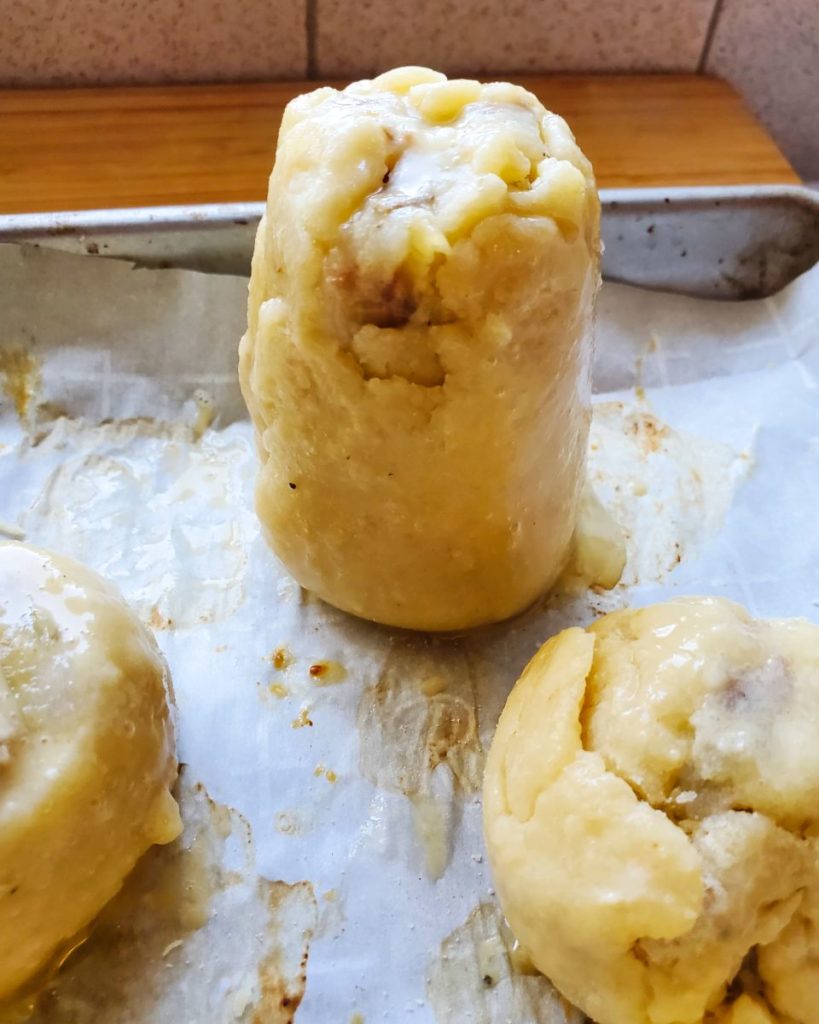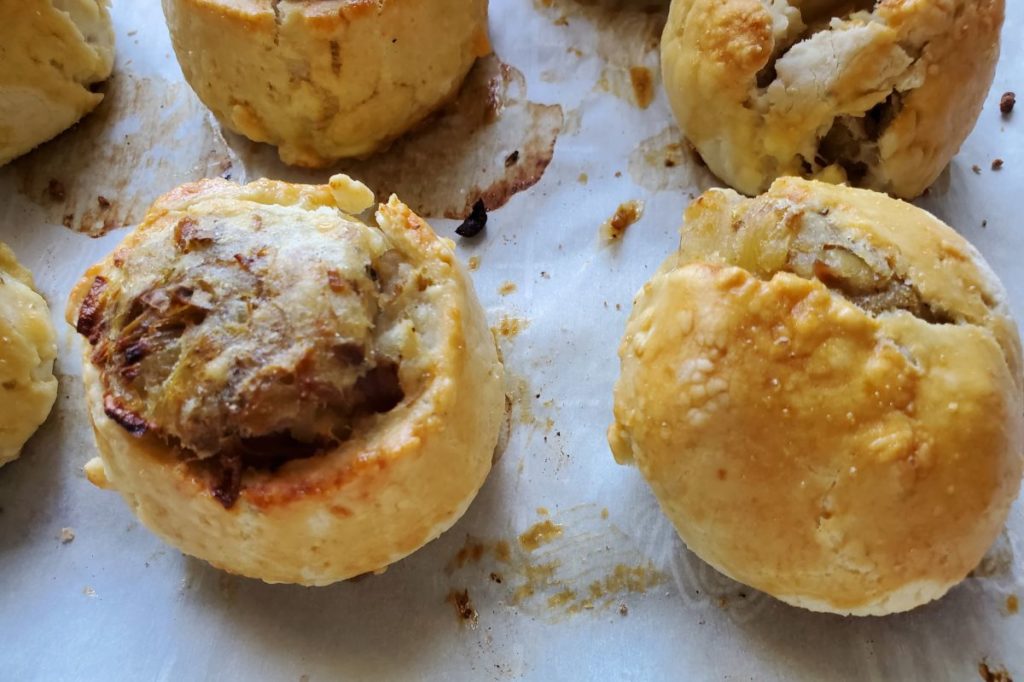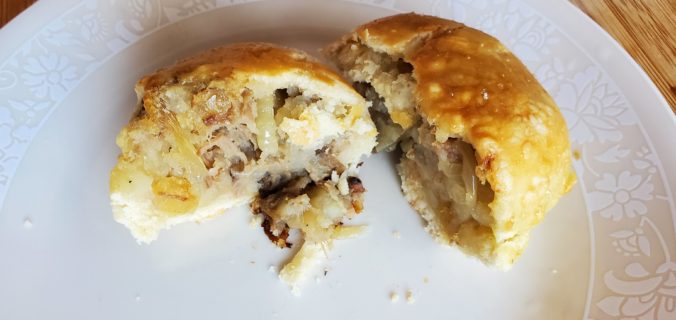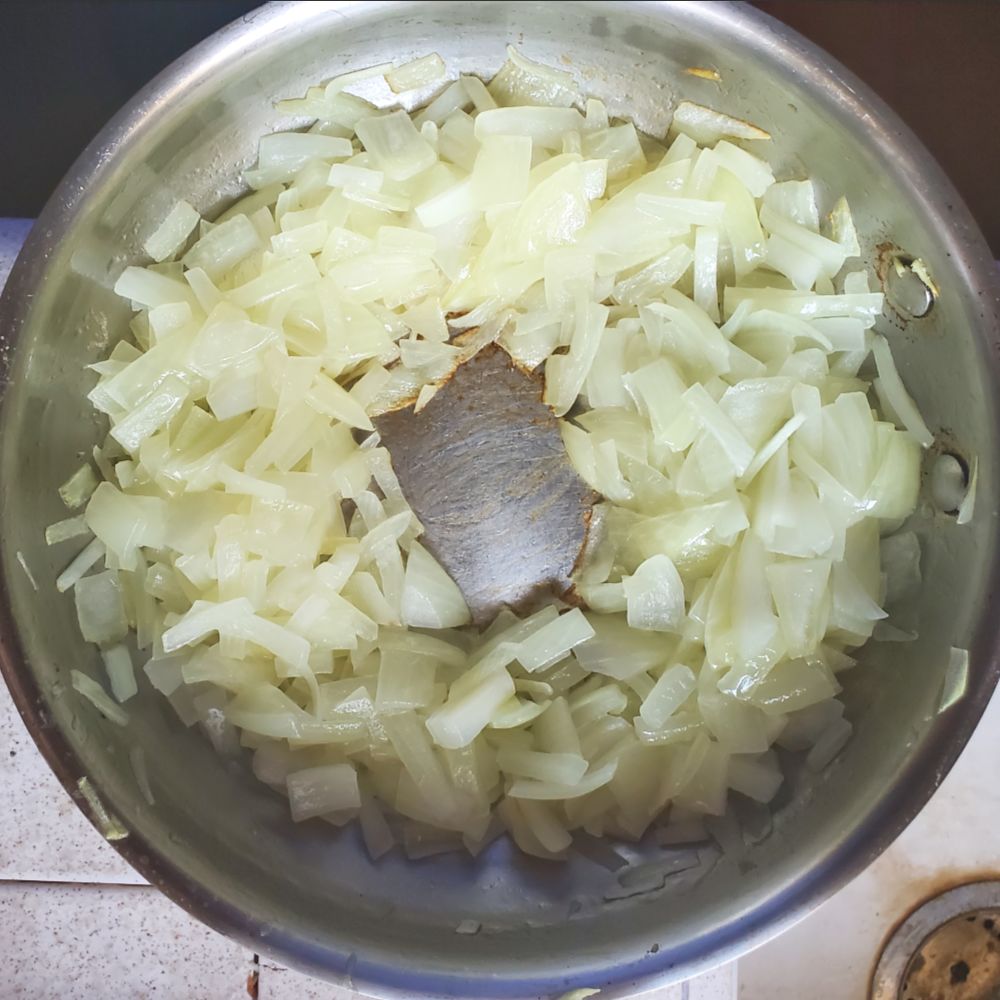Knish: /k(ə)ˈniSH/
noun: knish; plural noun: knishes. a dumpling of dough that is stuffed with a filling and baked or fried.
I grew up in a Jewish American home and was aware of knishes. Actually I was aware that my parents and brother ate them. I however hated onions and whatever they were added to so I watched as they ate them whenever a good deli became known to us on our travels. I wish I had become acquainted with caramelized onions earlier in life but how that happened is yet another story.
A college trip to Los Angeles introduced me to Cantor’s Deli on Fairfax and when moving to the area some 20 years later discovered the joys of a carb loaded gut bomb called the knish. Over the years they have become in infrequent bake for me but I thought of them recently after being across the street from Cantor’s. We stopped in to see if they were open, but current Covid restrictions had them take out only. The state of my knees does not allow eating while standing so unfortunately it was a pass.
A few days later, I had to have a knish. I could not find the saved recipe for my last batch. It has been several years and at least one computer upgrade. Several on line posts referred to Joe Pastry for his knish recipe. I tried to go to the site, but apparently Firefox Browser considers it unsafe for , so several references to his recipe were consulted. Both were similar.

I had the recommended schmaltz but not quite enough so I went way down the treif (unclean according to Jewish food laws) road and decided to use some bacon fat as well. Since I’m already there, I decided to use shredded and chopped pork shoulder as well in the filling. Traditional is often just not my thing.
To the stove. First off, the onions. One large yellow, eye blinking allium is cut and set to cook in schmaltz or chicken fat. For me, it is a long slow process which often takes close to an hour. They can of course be made faster, but very low and very slow gets me the result I am after.

Next, 3 medium Russet potatoes are cut in eighths, put into a properly sized pot of cold water and brought to a boil until fork tender. I do not peel potatoes even for the knish. It is wrong, but I just don’t care.
Since I bake by weight, this flour scoopage came to 350g. I mixed in baking powder and salt. In a separate bowl goes the egg, schmatz + bacon fat, ¼ cup of water, and vinegar. It was not quite smooth but I wanted to see if an overnight rest would get it the rest of the way. The dough was split into two and swaddled in plastic wrap. I’m thinking pie dough.

While all of this is going on, I am baking today’s focaccia as well so I have to pay attention to various processes going on.
When the potatoes are done, a knob of butter, salt and pepper join and a rough mash with the bean smasher. Into a cambro (brand plastic container) for an overnight rest. Once the onions are to my liking, they are left to cool on the stove while I get to cleaning up the 14 item mess. I actually counted. This does not include the storage vessels for onion and potato.

Come morning, it is time to make knishes. The dough is on the counter to warm a bit with the onions and smashed potatoes. I take the pork out of the fridge and cut the shreds into small pieces. This pork was cooked with cumin, fresh grated ginger, and soy sauce and while I have never before used it in a knish, it seems probable that it will taste good. I have made bacon knishes in the past but the pork is already cooked so that will do for this preparation.
Space to roll dough is in short supply which is one reason I always have to roll in batches. For batch one, I got the dough as thin as my area would allow. Unfortunately, this is not thin enough but it is as it is. The fillings were layered. First the potato, then the onion and finally the meat.


From 2nd batch only 6
The dough was not soft enough to do the recommended twist and pinch maneuver so I just cut the log into nine pieces. Once again, stiff dough prevented me from my previous method of stretching the bottom to close. Plenty of extra dough so I pieced the bottoms. Ugly indeed but it works well enough. Same problem with the top so these are fairly open which is fine if not traditional.
The knishes baked up crispy and nicely brown with a nice egg wash. These are snack size which is a personal preference. Three were gone in short order after skipping breakfast once again. (you may see a pattern here) I’m not entirely happy with the layering and it’s effect on the bite. Potato on the outside, onion in the next layer, and then the meat. Different bites with different tastes.

For batch 2 I mixed the onion and meat into the mash with more salt and pepper to try for a more even taste experience. After rolling the log, I did not cut off the ends but used the excess to make at least 2 with a more closed top and the last bit of dough was reformed and rolled thinner. I made a towering knish out of this piece just to see how it might come out. It did not collapse as expected but it is an odd looking knish. I did cook this batch an additional 5 minutes for a bit of extra browning. On the rotation, I managed to burn forefinger and thumb of my left hand and this typing is now just a bit painful. I am willing to suffer for you, the few public who actually see my work.

The second batch was a bit bigger than the first and I do like the ingredients mixed. I do not mind the open top and bottom as long as the ingredients are not wet since they tend to leak out. The crust was good if a bit stiff.

My Kryptonite has been for years any kind of pastry dough. I keep going back to it but each time it is a struggle. Many recipes have been tried but none has come out how I know it can. Like so many things in life, I just have to keep trying until I get it right. This preparation is good but the dough still fought with me to get it rolled out and it was still too thick which is not a bad thing on a knish. A partial victory is mine I suppose.

I did not convert this recipe to weight since I arbitrarily decided it was a forgiving dough. My 2.5 cups of King Arthur AP was 350 grams. According to KA, that measure should have weighed in at only 300 grams. I was far from the mark. 17% makes a real difference. Another lesson in why one should use weight and not measure in baking. The fault again is mine. Warts and all folks.

After much consideration and multiple pieces of knish, I wish to reexamine this particular dough. The towering knish was the final factor. It was made from the scrap of the 2nd batch. It resembled a filled rather than rolled knish, like they make at Cantor’s here in Los Angeles. That style of knish is made from a larger piece of dough that is filled with a large mass of filling and the sides pulled up and over the top to be joined. There is one layer of dough only. The filling to dough ratio is much higher.
This stiff dough of greater thickness than I wanted for a rolled knish held up very well to a filled preparation. The piece of dough just barely overlapped and I had concern it would not hold but it did. It was firm but crumbled nicely in the mouth. Although only animal fat was used, there was no hint of chicken fat or bacon, neither taste nor smell. It was nicely savory. Mostly chicken was used, with perhaps 20% bacon drippings to fill the measure.
The lesson of course is to have the right dough for the preparation in mind. If I made these more often perhaps I would have changed course when I saw how my dough turned out. As long as good information is gleaned, there is no bad bake, unless one counts the cookies with salt mistakenly used for sugar.

More dishes to wash
If You have Never had a Knish, You Should
Ingredients:
Dough
- 2 1/2 cups all-purpose flour (300 grams)
- 1 teaspoon baking powder
- 1/2 teaspoon salt
- 2 large eggs, one for dough and one for the egg wash
- 1/2 cup Schmaltz (chicken fat) or vegetable oil, I used a combination of schmaltz and bacon drippings
- 1 teaspoon white vinegar
- 1/4 cup to ½ cup water
Filling
- 3 Idaho Potatoes skin on
- 1 large caramelized onion
- 2 tbsp butter
- Salt and Pepper to taste
- Shredded Pork Shoulder chopped well. These are commonly made with nothing but potato and onion, but I had the meat available
Method:
Dough:
Mix dry ingredients in large bowl. In separate bowl combine water, egg, vinegar and liquid fat. Pour liquid into dry all at once and mix until shaggy. Knead only enough to be smooth. I just do it in the bowl. Separate into 2 pieces, form to disc, and wrap in cling film. Refrigerate for at least one hour and up to overnight.
Filling:
Cut potatoes into 8 pieces, cover with cold water in appropriate saucepan, bring to boil. Heavily salt water when it is boiling. Cook for 12-15 minutes until tender. Drain potatoes and set aside to cool a bit. Add butter and roughly smash with ricer or bean smasher. I like to leave mine a bit chunky. Season with salt and pepper. Add caramelized onions and mix well. If using meaty extras, mix that in as well. The seasoned potatoes will hold well overnight if you want to bake the next day.
Assembly:
Preheat oven to 375°. I like to roll the dough on a piece of baking parchment because it makes starting the finishing roll easier. Flour paper or counter well. Let dough warm 5 or 10 minutes and flour top and bottom. Roll out dough in a rough rectangle no more than ¼ inch thick and thinner if you can. Always roll from center out and turn frequently. If your dough is sticky, use the plastic wrap on top to help. Once the dough is thin enough, turn the long side towards you and spoon filling in a mound between 1.5 and 2 inches in diameter.
Use paper to start roll. Do not roll too tight. When roll is two layers all around, cut off excess and smooth log. Cut ends and save scrap dough. Cut log into pieces about 2 inches long. If your dough is softer than mine, push filling up from the bottom and stretch dough to close. Mix egg in a small bowl with just a splash of water and use a brush to wash the knishes before going into the oven.
Bake for 45 minutes, rotating your tray if needed to bake into an even golden brown color.

Help me grow by Following/Sharing on Social Media





